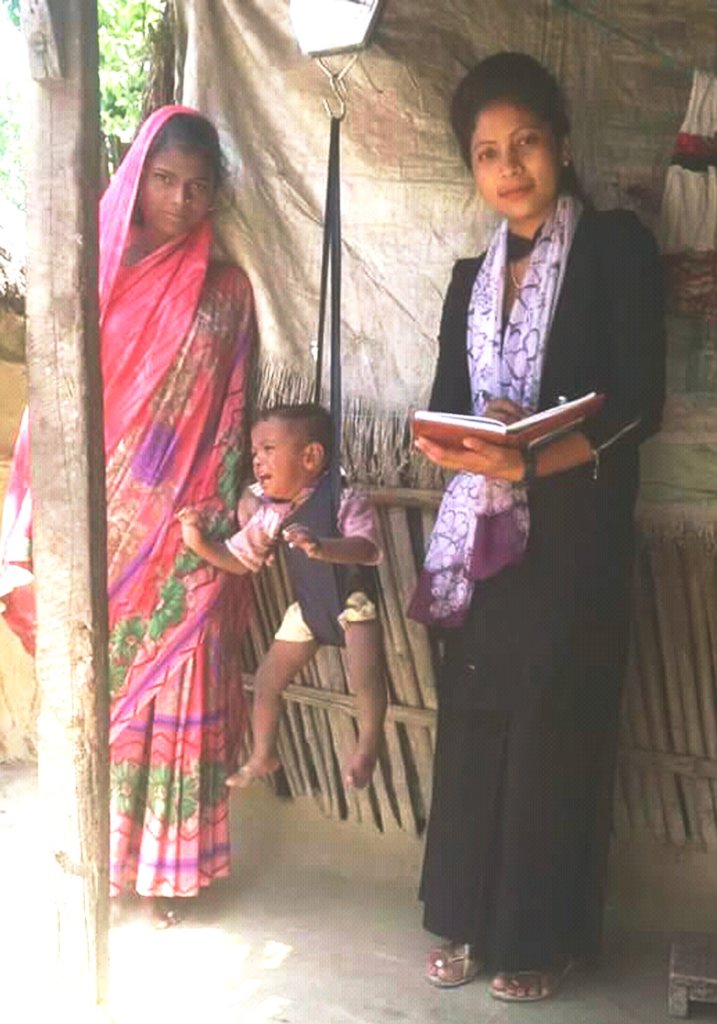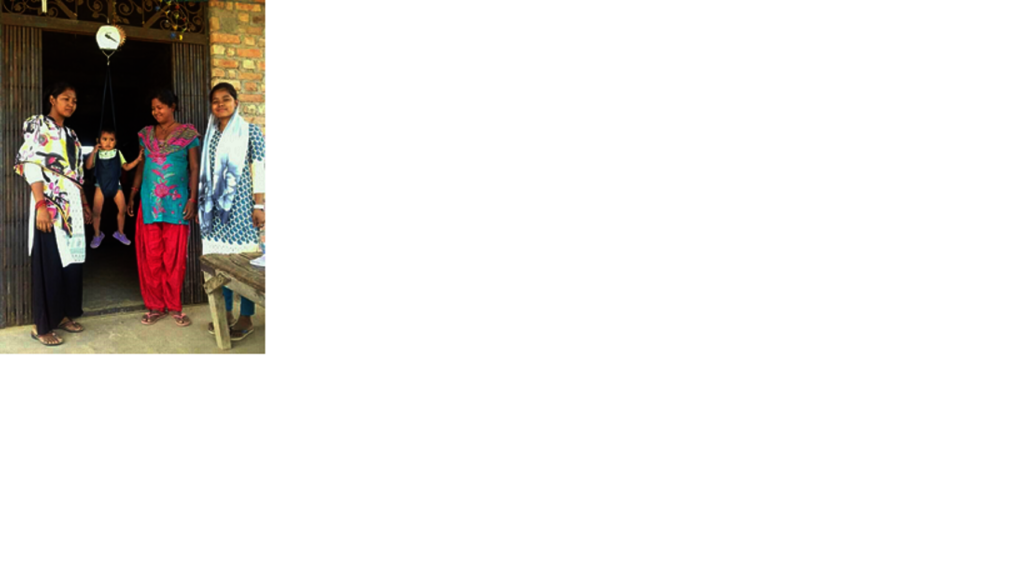By Linda Smith | Director, Project Leader
Measuring Day (May 2018)
baby, baby boy, baby girl
The second Measuring Day was met with mixed emotions by most of the baby crowd. The feeling of sitting in a swing was unsettling to say the least by the majority, as you’ll see in the photos. Decidedly, the most fun of the day was playing with the measuring tape. (see photos and text in attached pdf)
Several years ago during one of our Arsenic Awareness Workshops, we found two children with hydrocephalus. One young boy in Nadawa, who is now 7 years old, we helped with a stint operation, but the other child, a one year old girl, was in a district that was too dangerous to return for two years. Sadly, the young girl died during that time. This has made our Nutrition Team more aware of the importance of monitoring the children’s growth and identifying problems abnormalities in the early stages. Tracking weight gain or loss over 2 years will also help spot children who may have a medical problem. These parent can be referred to the local clinic and hospital for followup examination.
Grandmothers, aunties, and older siblings are frequent care takers when mom isn’t available. We encourage all the caretakers to attend workshops, thus, assuring nutrition and health care information is spread amongst the community.
WHO Guidelines for Weight Growth (Chart 1)
0-3 Months-- Gain of 175 g to 210 g per week
5 Months--- Most babies should have doubled their birth weight by 5 to 6 months
6-12 Months-- Gain of 400 g per month
1 Years Most babies have tripled their birth weight.
2 Years 4 Times the birth weight
3 Year 5 Times the birth weight
5 Years 6 Times the birth weight
7 Years 7 Times the birth weight
10 Years 10 Times the birth weight
(see weights in Chart 2 in attached pdf)
Thoughts
Holding one workshop with a couple follow up sessions during the weighting times may not be enough contact with the women. We’ve found ten children that are under weight from this group that need more frequent follow up with the Female Health Volunteer (FHV). The FHV can check the mother’s nutrition status, child’s health stats and provide more training for the family, especially in nutrition. With this in mind we will use extra funds to work with the FHV and the mothers on a monthly basis.
http://www.who.int/childgrowth/standards/Technical_report.pdf?ua=1
https://www.infantchart.com/ (infant weight calculator)
http://www.who.int/nutgrowthdb/about/introduction/en/index4.html
Project reports on GlobalGiving are posted directly to globalgiving.org by Project Leaders as they are completed, generally every 3-4 months. To protect the integrity of these documents, GlobalGiving does not alter them; therefore you may find some language or formatting issues.
If you donate to this project or have donated to this project, you can receive an email when this project posts a report. You can also subscribe for reports without donating.



